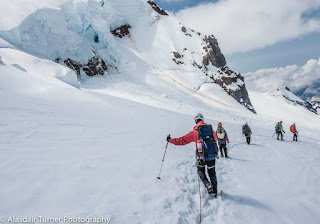 As the warm and dry weather of summer approaches, we all get excited about going out to play in the splitter weather. However, along with the blue skies comes the increased likelihood of forest fires...and for most of us, the idea of a forest fire in the areas we frequent turns our stomachs.
As the warm and dry weather of summer approaches, we all get excited about going out to play in the splitter weather. However, along with the blue skies comes the increased likelihood of forest fires...and for most of us, the idea of a forest fire in the areas we frequent turns our stomachs.Forest Fires often ravage the areas we care for, leaving them desolate waste lands in which the native flora and fauna are devastated, rural houses are destroyed and our access to the mountains is blocked. The list of the cons to forest fires seems daunting, especially the list of cons for those fires which are responsible for the loss of property, or even worse the loss of human life...but surprisingly, some wildland fires can actually be beneficial, especially the smaller ground fires which do not ravage the entire forest.
Forest fires can help stimulate the new growth and germination of many different plant species. For brevity, we'll look specifically at one type of plant that is affected positively by wildfires, the sequoia tree.
Sequoia trees in Sequoia National Park need forest fires to help them reproduce. When a fire moves through, the heat dries out the cones up high in the canopy, which causes the seeds to release and fall to the ground. In addition to this, the fires clear out the lower vegetation that would otherwise block the light and compete for nutrients with the sequoia seedlings. Without these fires, the great sequoias and other plants that need fires to aid in germination would not be able to successfully repopulate.
In the same way that wildland fires clear out brush and smaller trees to help the sequoia seeds get the nutrients they need, fires can also “reset” the vegetation for an area. Aggressive plants often choke out slower growing plant-life. When the existing vegetation is burned-up, the competition is limited and this promotes more diversity of plant-life on the forest floor.
In addition to aiding in the life cycle process of some vegetation and vegetation diversity, forest fires are also efficient in pest eradication and pest population control. This has a positive affect on a number of forest trees and plants that are adversely affected by these pests.
Certainly, some fires are bad. Some fires completely devastate everything in their path. And while these large fires have some benefits, it's more common for the smaller ground fires to provide the most benefit. Indeed, part of the reason that some fires are so large, is because there haven't been enough of these smaller fires to clear out the debris on the forest floor; the debris that when stacked-up can create a real tinderbox. This is part of the reason that some National Parks and National Forests have taken to setting controlled burns. By doing this they are helping manage some of that debris on the forest floor while providing the positive benefits of a small ground-fire.
So while none of us want a forest fire in any of the wilderness areas that we visit regularly, it is good to know that when they do affect these areas, they're not all bad.
To keep up with the forest fires in your area, click here.
Following is a public service announcement about forest fires that was produced in the 60s. You'll probably recognize the celebrity who narrates this commercial as Rod Serling, Mr. Twilight Zone himself...
--Erik Budsberg, AAI Staff




















